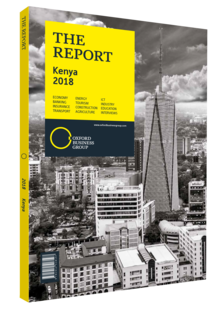Ahmed Rady, General Manager, East Africa Coca-Cola : Interview

Interview : Ahmed Rady
How do you evaluate Kenya’s priorities when it comes to developing its manufacturing sector?
AHMED RADY: The Big Four agenda is a step in the right direction for Kenya, thanks to the government’s structured approach and commitment to accelerating economic growth under the four pillars. Here, manufacturing plays a key role. A strong manufacturing base is the foundation upon which long-lasting economic growth is realised. In Kenya, the government’s support of the manufacturing sector is attracting new investment. For example, following the American Chamber of Commerce Summit held in June 2018, Kenyan and US businesses signed deals totalling around $100m. Additionally, Kenya moved up 12 places on the World Bank’s ease of doing business index for 2018. Ensuring integration across the manufacturing value chain, particularly in agriculture, is important. The administration’s proposals and incentives to encourage local manufacturing, which include lower night-time electricity tariffs and improvements in infrastructure, have been positive. However, in order to maintain a progressive legislative and regulatory framework that supports the ongoing growth of manufacturing, these efforts must be sustained over the long term.
How can international companies and local entrepreneurs cooperate to foster industrial growth?
RADY: In order to boost industrial growth, international companies and local entrepreneurs can cooperate to grow intermediary manufacturing directly in Kenya. This will ensure integration across the supply chain for higher level manufacturers, and as a result they will not have to import intermediate inputs, which have a material cost to the country. The government can also support this cooperation by adjusting the investment climate to encourage the entry of private investors, and to support small and medium-sized enterprises. The government is making an effort to prioritise infrastructure by scaling up rural financing programmes, and developing business and public services support in order to increase value creation.
What steps need to be taken at the EAC level to strengthen regional industrialisation?
RADY: Kenya has seen a number of large-scale investments made in the manufacturing sector, and for these investments to make a larger impact they need to be supported by access to regional markets. The EAC has made gains on this under the Customs union; however, implementing a synchronised trade policy would improve it further. EAC countries should also find lasting solutions to non-tariff barriers, which limit manufacturers’ abilities to export into new markets or get inputs for their own manufacturing process. There also needs to be development of complementary policies that support the objective of industrialisation. This can be accomplished with the support of private sector players in public-private partnerships, and by strengthening the position of the private sector as a whole.
What factors should local producers consider when working to increase competitiveness?
RADY: Local producers need to be aware of the fundamental drivers of price trends within their markets. They also need to develop a rationalisation framework for their input and output costs, and ensure they monitor their margins closely in order to prepare for any demand shocks the market may experience. Increasing competitiveness, however, needs to be enabled and supported by the government. Kenya has made progress streamlining its business regulatory environment by focusing on improving transport and energy, and reducing import clearance times and input costs. The Port of Mombasa’s operations and infrastructure projects in the EAC contribute to the reduction of transportation costs within East Africa by up to 40%, and there are numerous ongoing energy projects that aim to increase the capacity of the national power grid.
You have reached the limit of premium articles you can view for free.
Choose from the options below to purchase print or digital editions of our Reports. You can also purchase a website subscription giving you unlimited access to all of our Reports online for 12 months.
If you have already purchased this Report or have a website subscription, please login to continue.

